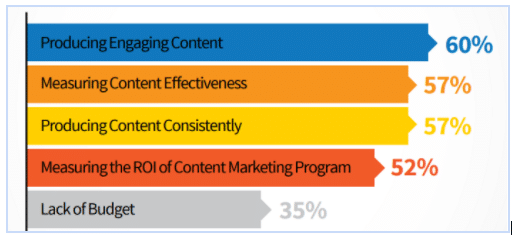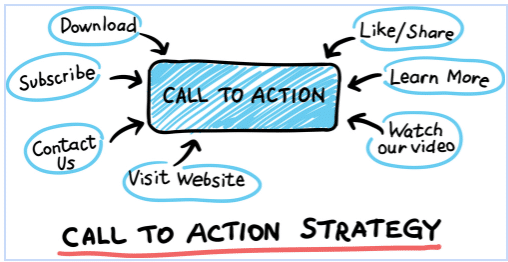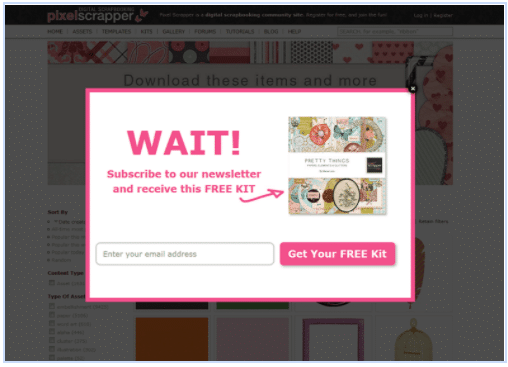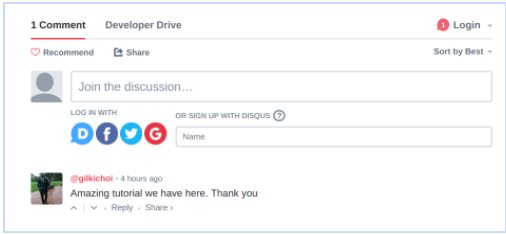No matter how creative, ground-breaking, or popular your content assets are, they are bound to impact your business’ bottom line. The real question lies in how proactive you are when measuring every aspect of your agency’s content marketing strategy.
According to a 2020 CMI study, an impressive 80% of marketers are down to using metrics to measure performance. However, the number drops to 65% when asked if they measure against any KPIs. Sadly, only 43% of them measure content marketing ROI.
We understand the content is subjective, and reader preferences vary. This is why it is crucial to establish measurement practices that enable you to track, analyze, and optimize your content’s performance to make it more appealing to the target audience.
And suppose you particularly manage content marketing clients. In that case, you must identify the type of content working for them, discover areas for improvement, and determine where to scale up for better results.
Adding to that thought, here are five metrics you must track and improve for your clients:
1. Website traffic
Unless you have been living under a rock, you will agree site traffic lays the foundation of content marketing success. Zero traffic = zero visitors = zero conversions – right? Not to sound dramatic – if no one is looking at your client’s content, nobody will act on it, much less convert.
Therefore, to understand how much traffic a content piece generates for the site, turn to Google Analytics. It is known for providing the most accurate data related to traffic sources, user behaviors, and acquisitions.
Go to Behavior » Site Content » Landing Pages to check the website pages visitors first land on and the traffic source.
This will help you identify which part of your client’s content marketing strategy drives traction and which does not. Besides, analyze how much the site traffic has grown over time. Easily compare time periods from the dashboard and make appropriate amendments.
2. Content effectiveness
Often, the most overlooked KPI for a business is the value it adds to its audience, and content effectiveness plays a massive role here.
Sure, it is good to produce a lot of content regularly. Writing five SEO-friendly blog posts a week for a client is an excellent strategy and is bound to positively impact organic traffic.
However, if the content piece is trite, lacks sources or proper links, does not answer a question, and has no brand voice, it will affect the site rankings. Fluff pieces are irrelevant.
Therefore, to measure content quality, it is necessary to find out how well a content asset pushes forward site visitors to the next stage of the customer journey.
In this case, CTA conversion rates can act as a good indicator of whether or not content is persuasive and engaging.
For example, if your SaaS client has written a blog on the pain-points its product can alleviate, the next step would be to nudge the readers to sign up for a Free Trial. Measure content quality based on the conversions from blog traffic to free trial signups.
Besides, you can even measure quality based on the average time a visitor spends on a webpage. For example, you have created a blog post for a client, which takes about ten minutes to read. But the average time spent on it is just two minutes.
The poor metric could be a result of a number of reasons. The content might be poorly written for starters, states the obvious, or has too much jargon. Whatever the reason, the average time spent on a page indicates that your client’s content is not engaging enough to fetch optimal traction to the website.
Alternatively, you can also track the number of times your client’s content has been shared from individual profiles on social media. This is a strong indicator that the piece is engaging enough to attract brand advocates, site visitors, and followers.
3. Lead quality
It is no surprise content is an integral part of the modern sales funnel. From nurturing emails and lead magnets to landing pages and contact forms – the importance of writing a compelling copy across mediums cannot be ignored.
However, the goal of connecting with the target audience at the right time and influencing their buying journey depends on the type of content you choose.
For example, if you have drafted a blog for your client along with a content upgrade, you can tell if it is working to attract leads if the website visitors:
- Read the blog post and download the free resource [this could turn fire up the nurturing process via email]
- Check out related resources that are a part of your client’s marketing funnel
- Call or email the sales team, or fill up the contact form for more info
Such actions indicate that the content is generating qualified leads for your clients. In addition, you may track other essential pages like “Features,” “Testimonials,” and “Pricing” to weigh the interest of website visitors in your client’s offering.
For example, if 20% of the visitors who visited the pricing page ended up on the contact page, this shows they are interested.
Since this indicator is not straightforward, deploy heat mapping tools on your client websites and give them remote training on tracking user experience. Also, set up analytics goals on Google Analytics to help piece the complete info together.
4. Exit rate
The exit rate shows you the percentage of internet users who landed on a website on one page and left directly without reading it. When you build a content marketing strategy for your clients, it is vital to make it around multiple assets to give more options to engage with visitors.
A low exit rate proves that your content successfully took the website visitor from one page to another via interlinking, CTAs, and so on. Identifying which pages are repelling visitors is an opportunity to refresh the content and design elements.
You can even deploy exit intent pop-ups to engage visitors one last time before they leave the website. Suggest helpful blog posts and free resources, or ask them to follow on social media or subscribe to the company newsletter.
For instance, your client offers on-demand webinars people can sign up for. After subscribing, they are shown several dates to attend the online event on. You realize that even though they sign up for the webinar, they don’t stick around for selecting their date of preference.
Instead, they browse through the page and bounce off. Maybe they are not free on the proposed dates? Displaying an exit intent pop-up, asking them to subscribe to the blog can help them stay updated with your client’s content even if they don’t attend the webinar.
If they specifically exit a landing page, display a slide-in scroll box that shows up if they browse through half the page and then try to exit it.
Your client’s content marketing goal is to nudge the visitors to take action before they bounce off, and exit intent pop-ups can help you capture leads and grow your email list.
5. Post engagement
While we spoke about tracking original shares of the content pieces on social media, this particular point focuses on comments. While liking and sharing (and retweeting) hardly take a millisecond, taking some time off to write an opinion requires some effort.
So, if a reader leaves a comment on your blog page or the social media post, there is a good chance they have found it useful.
It is good to monitor such comments and understand why those comments – good or bad – have been made. If you do this dedicatedly for your client’s content, you can use this external input for crafting a better content marketing strategy.
To manage your client’s blog comments, deploy Disqus or Commentful. These tools will help you track online conversations effectively and keep spammers and bots at bay.
Also, track mentions of your client content on social media; pay close attention to the context and sentiment behind the comments. Alternatively, if another article partly quotes your client content or uses it as a reference, this too can be considered as a mention.
BuzzSumo is an excellent tool for filtering your mentions by keywords, backlinks, brands, and competitors. Such metrics will help you attract a more relevant audience to your website – all through the power of content.
Wrapping it up
Agencies should evaluate the content marketing metrics of their clients for relevancy. Being flexible in measuring each content asset’s results will open up new opportunities for the client’s business growth.
Give each client six-to-nine months to gauge how the revised content marketing strategies are performing. As time passes, you will want to revisit KPIs and maybe add or subtract specific metrics to the mix.
Always remember: establishing measurement practices is an on-going task. If you want the best possible results for your clients, continually assess the data, track essential insights, and keep improving the content. Your strategy will soon start fetching long-term results for your clients.






